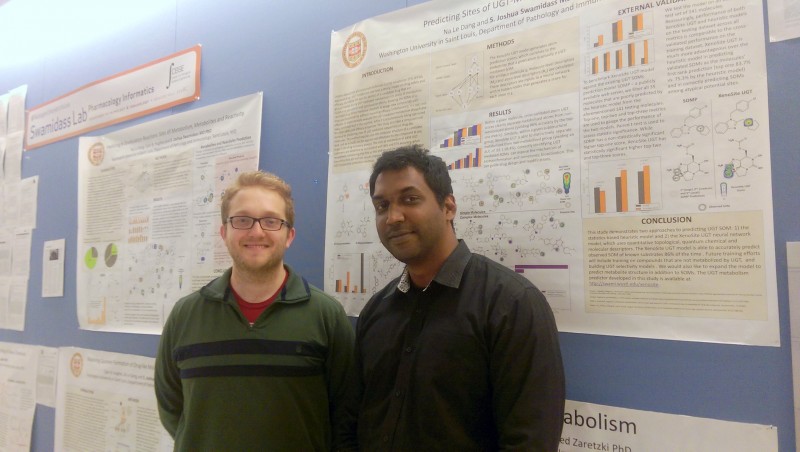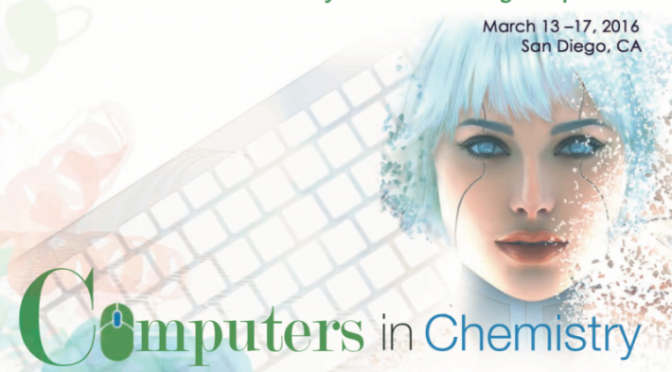Next week (March 13 – 17, 2016), Tyler Hughes and Prof. S. Joshua Swamidass will be at the American Chemical Society (ACS) meeting in San Diego.

Tyler will be presenting his award winning poster (Chemical Computing Group Excellence Award) about chemical reactivity with macromolecules, glutathione, and cyanide. We are grateful for the travel award from the Chemical Computing Group to support his attendance.
Prof. Swamidass will be giving an invited talk (abstract below) on modeling drug epoxidation at the ACS Central Science sponsored symposium on The Centrality of Computing Across Chemistry, on March 15th at 1-5pm. In addition to presenting the work on epoxidation, he will be presenting on integrating metabolism and reactivity models to make mechanistic toxicity predictions. This talk will be an excellent place for prospective post-doctoral applicants to see the work on which our anticipated NIH funding is focused.
In support of better faith/science dialogue, also, Prof. Swamidass will visit Reasons to Believe, Fuller, Biola, and be appearing on Ken Fong’s Asian America podcast.
Modeling epoxidation of drug-like molecules with a deep machine learning network (final paper number: MPPG 66)
DIVISION: Multidisciplinary Program Planning Group
SESSION: The Centrality of Computing Across Chemistry
DAY & TIME OF PRESENTATION: Tuesday, March, 15, 2016 from 1:00 PM – 1:40 PM
ROOM & LOCATION: Room 4 – San Diego Convention Center
AUTHORS: S. Joshua Swamidass M.D. Ph.D., Tyler B. Hughes, Na Le Dang, Grover P. Miller
Drug toxicity is frequently caused by electrophilic reactive metabolites that covalently bind to proteins. Epoxides comprise a large class of three-membered cyclic ethers. These molecules are electrophilic and typically highly reactive due to ring tension and polarized carbon–oxygen bonds. Epoxides are metabolites often formed by cytochromes P450 acting on aromatic or double bonds. The specific location on a molecule that undergoes epoxidation is its site of epoxidation (SOE). Identifying a molecule’s SOE can aid in interpreting adverse events related to reactive metabolites and direct modification to prevent epoxidation for safer drugs. The foundation for this model was an algorithm originally designed to model sites of cytochromes P450 metabolism (called XenoSite) that was recently applied to model the intrinsic reactivity of diverse molecules with glutathione. Since publication, our work has continued down this line. The model can identify when structural alerts in drugs are bioactivated. Combining this with metabolite construction and reactivity prediction, we can identify likely pathways to reactivity in drugs. This effort is contributing new insights into how and when drugs are bioactivated into toxic metabolites, and may aid in making safer drugs.


Love it ! Do well.